I first read about the Pythagorean mooring technique in Roger Barnes’s delightful and informative book, The Dinghy Cruising Companion, when it was published in 2014. It is a simple and clever way to anchor a small boat without using a clothesline loop or outhaul setup. As described, a Pythagorean mooring, named after geometry’s theorem of right triangles, is most useful in settings where tidal range is modest and where there is fairly deep water close to a shoreline.
The basic technique, as illustrated in Barnes’s book, involves dropping an anchor in deep water with enough slack in the rode to let you paddle the boat straight to shore—one leg of the right triangle. After you step ashore, you pull the slack out of the rode and make it fast to the bow. A long warp is then tied to the bow and its other end walked along the shore—the other leg of the triangle—until the boat is offshore along the “hypotenuse” formed by the rode and warp. The warp is secured ashore and the boat is kept snug in deep water.
Over the past few boating seasons, I have experimented with variations on this conventional setup on shorelines that aren’t straight and in anchorages with fairly large tidal ranges. Maine’s Penobscot Bay has tides of 10′ to 12′, which can create challenges for boaters who wish to come ashore without getting stranded by a falling tide, or don’t want to deal with waves that would pound a boat on the beach during a rising tide. I use a modification of the Pythagorean system to make a convenient anchorage where a promontory projects from a long sweep of sandy beach.
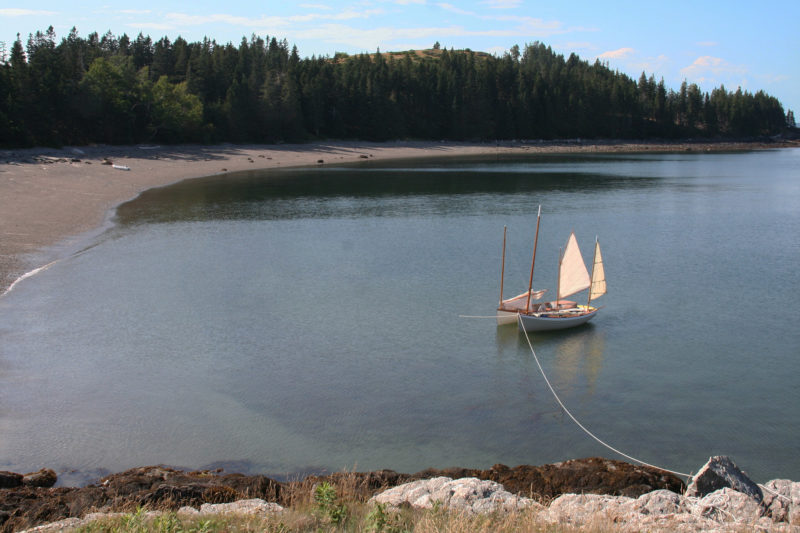 photographs by the author
photographs by the authorUsing the angle created by a beach and a promontory, the system can get the boats in water deeper than it is where the anchor is set.
I set the anchor beyond the point where underwater vegetation on the bottom indicates the low-water mark, then bring the boat into the beach near the base of the promontory. All I have to do to pull the boat into deep water is walk the warp out the point far enough to keep my boat, and often one rafted up with it, afloat despite the impressive amount of beach exposed by the low tides. With enough anchor line, I could just as easily set the anchor on dry ground above the high-water mark, letting the hypotenuse extend from the beach to the point.
When I find myself in an area where numerous small islands and a rocky shoreline offer a multitude of small pocket coves, no anchor is needed. I simply tie off one end of a warp to a tree or rock, scull into the cove to the approximate desired resting place for the boat, and secure the line to the stem. I then bring the boat back to shore, and walk the free end of the warp around to the other side of the cove, haul the boat into position, and then secure the warp on shore.
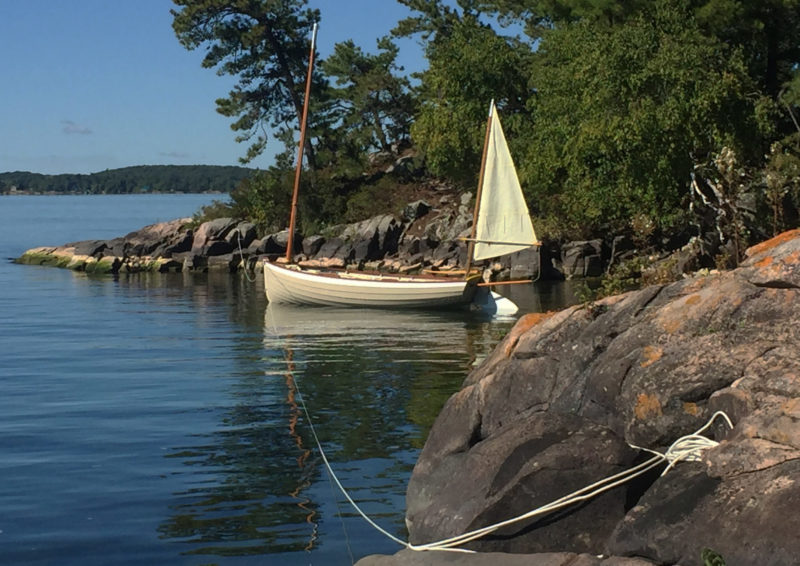
Lines spanning the mouth of a small cove can keep a boat safely away from the rocks.
The Pythagorean technique offers a convenient, adaptable, and effective way to moor a boat offshore with minimal extra gear. In addition to my 200′ anchor rode of 3/8″ three-strand nylon, I have a 300′ warp of 5/16″ three-strand nylon. You should give some thought to whether tidal currents may change while the boat is set out, so that you can avoid having the boat swing in a way that it becomes entangled on the line it is tethered to.![]()
John Hartmann lives in central Vermont. He built his Ilur dinghy, WAXWING, to sail the 1000 Islands region of the St. Lawrence River, Lake Champlain, and along the coast of Maine. His article, “Maine Island Idyll,” appears in this issue.
You can share your tricks of the trade with other Small Boats Monthly readers by sending us an email.
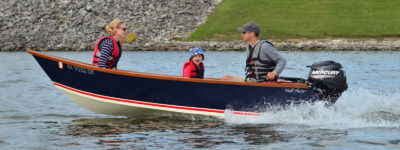
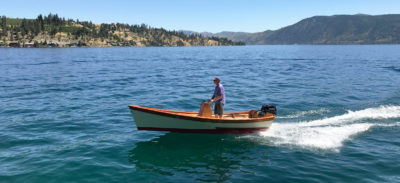
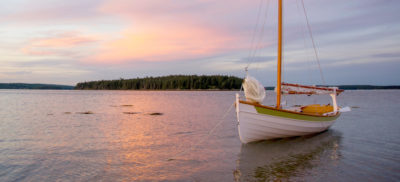
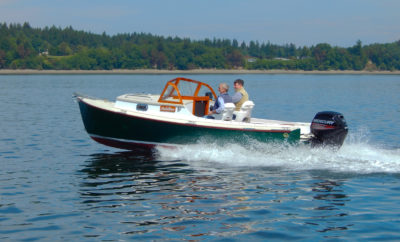
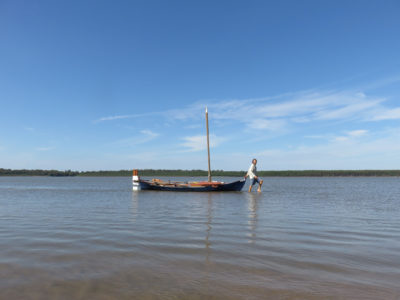
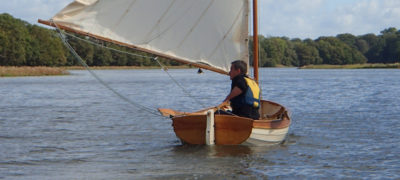
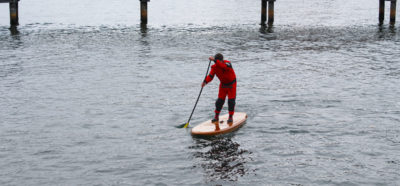

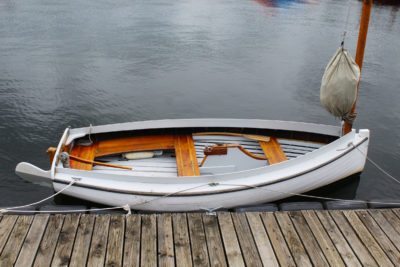
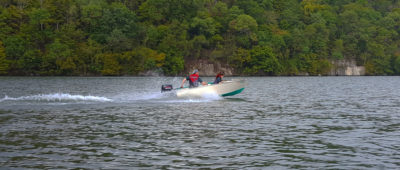
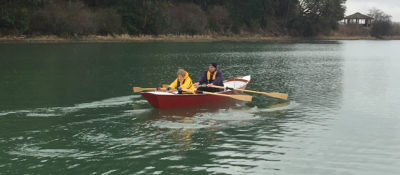
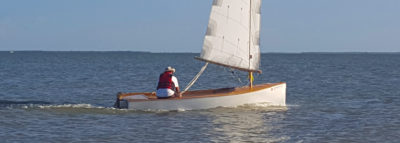
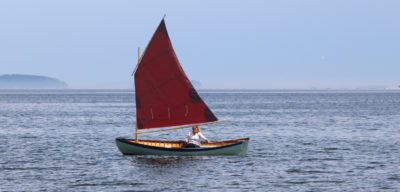
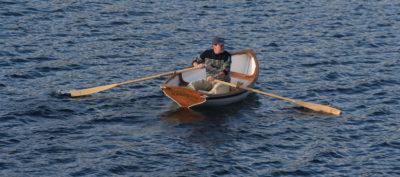
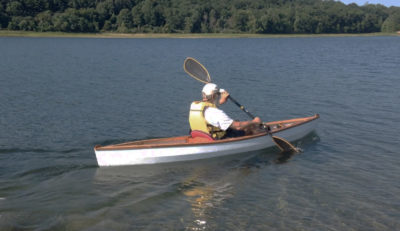
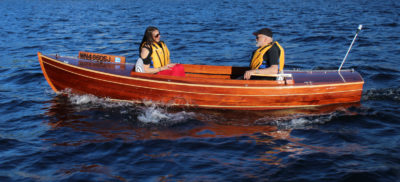
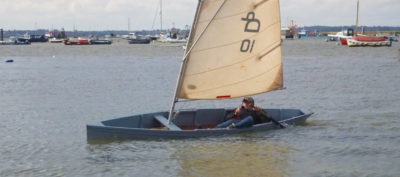
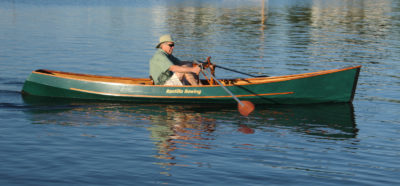
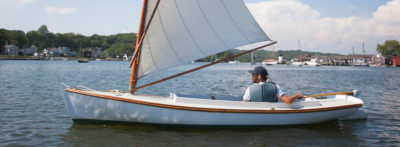
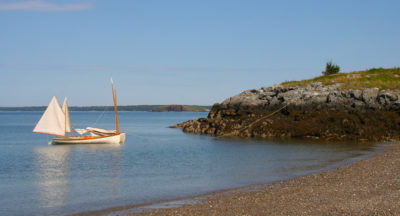
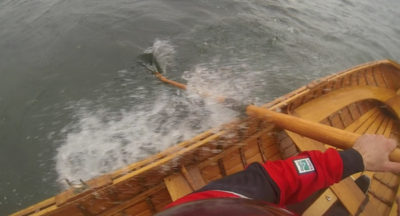

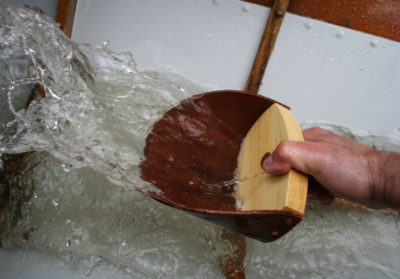

Join The Conversation
We welcome your comments about this article. If you’d like to include a photo or a video with your comment, please email the file or link.